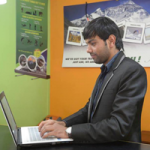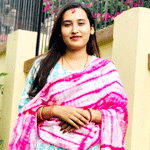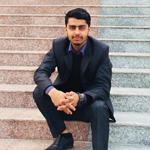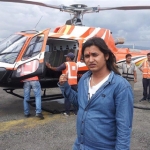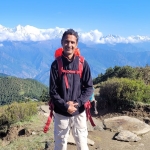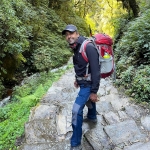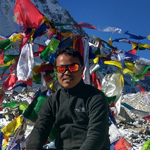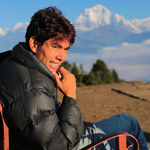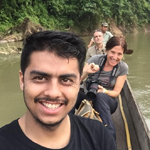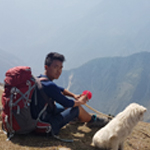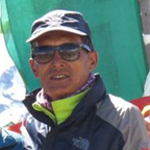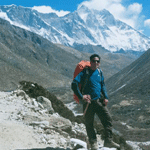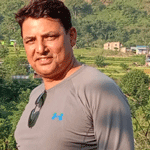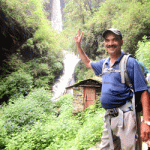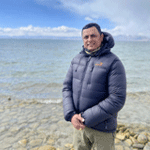Nepal is home paradise filled with natural beauty, the diversity of trekking in Nepal cannot be found in any other region of the world. In fact, the lowest point in Nepal is 59 m above sea-level in the Terai region while the highest point is Everest, 8,848 m above sea-level. From the plain lands of Terai to the high Himalayas, there is diversification and singularity in every aspect. This is what makes Nepal so unique. Due to variation in the topography and altitudes, Nepal has been famously spotted as a diverse Trekking Region for real adventure. Nepal offers normal trekking routes for short hiking which start from 2500m (Australian Camp, Ghorepani Poonhill) to above 4000m (Everest Base Camp, Annapurna base camp, Langtang valley, Annapurna circuit and many more).
You may have a lot of queries regarding trekking in Nepal. In this article, I have tried to answer some of them.
Is it safe to travel in Nepal?
After the devastating earthquake in 2015, every visitor has had this common question in mind. And the answer is yes, it is safe to travel in Nepal. You can come here and enjoy without any hesitation or second thoughts. Nepal is one of the most fascinating places to visit on earth as well as really most safe spot to travel comparing to multiple countries due to religious nature of people and their natural kindness too.
How is the current political situation in Nepal?
The political situation in Nepal is facing a transitional shift. Nepal is in the process of adopting a federal structure of governance form. From the political view, there are not many obstacles as you might think.
How can I get a Nepal visa for arrival?
You can get your arrival visa at Tribhuvan International Airport in Kathmandu. Most of the people can obtain a visa on entry to Nepal. Some countries’ visa will need to be arranged prior traveling.
The price of visa depends on the number of days you will be staying. $25 is for 15 days from the date of issue, $40 for 30 days and $100 for 90 days tourist visa. You will need two passport size photos. Other documents are not required. You can apply for an online visa through (http://www.online.nepalimmigration.gov.np).
Do you have any pickup facility from the airport on arrival and departure?
Yes, our company has a pick-up facility as a complementary policy. At your arrival, our agency airport representative will pick you up from the airport. You can recognize us at the spot easily through our company’s name card.And when you complete your trip, we will drop you back.
What type of insurance should I get? How can I get it?
We advise you to get your general travel and medical insurance cover from your respective country. In Nepal, you should buy medical and mountain evacuation insurance for traveling. But, we don’t offer mountain rescue insurance here.
Adventure Experiences in Nepal
Should I Hire a Porter, a Porter-Guide, or a Guide and Porter?
Hiking support field crew is up to your preference. A porter will only carry your bag and may or may not speak English. If you want to go it on your own but cannot carry your own bag, a porter is recommended.
Porter-Guides will carry your gear as well as help you as a guide. They can speak little English. Their abilities may range considerably, so you need to do a bit of research into your porter-guide first. They may or may not help you get accommodations, and may not even stay with you while you trek some of the times.
Guide and Porter is fully escorted while you are on trek. Guide who booked all of our rooms, in the nicer places, ordered your meals, and the full packaged included just about everything we needed along the way so you do not have to worry about arrange things while you are on trek as well as you are on safe hands.
Do I really need a trekking guide?
According to recent changes in policy, trekking guides are almost mandatory for trekking in Nepal for everyone. It is to ensure safety and protection of all visiting tourists.
Plus, the journey will be a lot more informative and memorable with guides. S/he will be your friend and company during the journey.
But if you are well experienced and have trekked before as well, you may not require one. But if you are with a guide, it will be easy for you to tackle any problems during the trek.
Do I need a porter?
This part completely depends on your choice. If you think you are able to carry backpacks on your own, you can avoid them. If not, it is better to hire one.
You can have double benefits as well. As porters may have knowledge about the trails and settlements, you may not even require a guide.
Do you have tailor-made trips?
Yes. If there is any specific place that you want to visit that is not on our itinerary or if you want to combine trips or do multiple treks, we can surely arrange that. Send us your ideas and we will work with you to put together a customized trip of a lifetime.
When is the best time to visit Nepal for trekking?
Spring and Autumn season can be considered as the best time for trekking in Nepal. October to November is the most popular time for trekking in Nepal. As it is the post monsoon period, the climate is clear and the mountains have an amazing view. After that, March to May is the second most popular time. This pre-monsoon time has warmer weather with good visibility. Besides, short tea house treks can be done during the winter season as well. I suggest you guys not to make plans for treks during monsoon and winter as far as possible.
How difficult is trekking in Nepal?
Nepal is known worldwide for its adventurous and interesting trekking spots. You certainly need to keep in mind that the journey will be challenging. The toughness of the trekking depends on its altitude, grade, and location. There are different gradings for trekking such as; easy, medium, challenging, and demanding. You can make your choice depending on these grades. Regarding time, you will be trekking 5 to 7 hours per day for altitudes ranging from 3000m to 8848m. But again, it will depend on the type of trek. So no need to be afraid! You will enjoy extreme wilderness untouched by modern development. You will be grateful for the thrill and adventure of exploring the exotic nature.
How long will be the trekking period?
The period of trekking will depend on its type and grades. As I have already mentioned about the grading of trekking, the most challenging treks will be for more than 4 weeks. The easy type of trek completes in about 1-3 days whereas the moderate will take about a week. The days taken cannot be exactly calculated as it might depend on weather conditions and other emergencies.
How fit should I be for the trekking?
You should be mentally and physically prepared for the trekking. The success of trekking wholly depends on you. We suggest you choose the trekking routes that suit your fitness level. Obviously, shorter treks are easier than longer ones. The longer treks will require a better standard of fitness. So, be in your best physical form. Believe in yourself and move on!
What are tea houses and camping trekking?
Teahouse trekking and camping trekking are the two general types of trekking in Nepal. Teahouse trekking is the most popular type of trekking in Nepal. It is available in the trekking regions of Annapurna, Everest, Langtang, and Manaslu.In tea house trekking you will get good accommodation and meals with a variety of items in the menu including Nepali Dal Bhat.
Camping trekking means making a full camp, carrying everything for the whole trip and getting along for the destination. In this type, you will fully cater for camping. You (or porters or packed animals) will carry all the camping gears including food, tents, sleeping bags, medical kits, etc. You will be pitching your camps wherever suitable. You will be accompanied by a guide, cooks, porters, and sometimes a packed animal. As compared to the tea house trekking, camping trekking is a bit difficult and adventurous in Nepal trekking.
What types of food will be served during the trekking?
Well, mainly we get simple local food; both vegetarian and non-vegetarian food will be mostly available. But, I recommend you to have vegetarian during the trekking period. It will be more hygienic and fresh food we get in Himalaya.
About the hygienic standards in tea houses, the fruit and vegetables are well soaked in iodine before cooking, local cuisine will be simple and homely reflecting the Nepali culture. Continental and international cuisine can be also served (depending upon the places).
What are the sources of drinking water supply during trekking?
All Tea Houses have boiled water for trekkers. And on the trek you will be provided with drinking water by your guide. The guide will make sure that water is safe for drinking. Most of the lodges serve boiled and filtered water, safe for drinking. If you want, you can buy bottled mineral water as well.
What kind of clothes is needed for trekking?
Choosing the clothes for trekking is very important. Please, check our trekking equipment list for details
Will there be any telephone/internet facilities at higher altitudes?
Most of the villages along the popular trekking routes have good coverage of cell phone and internet. The Wi-Fi service is slowly becoming popular. You can also find telephones for international calls. But, these extra services will cost you extra money.
What do I need to carry on the trek?
If you hire a porter, he will carry your luggage and belongings. A porter will carry max 25 KG of load. You should remember to carry a small day-pack, fleece jacket, waterproof clothes, warm hat, sunhat, sun-cream, water bottle, first aid kit and water purification tablets. Besides, you can carry any other stuff you think is important and useful while you are on trekking.
Water Safety in mountain?
Trekking Plus suggests you to drink boiled water or a filter for the tap water. Water from the tap is not safe for consumption, even if it‘s from your hotel. Remember to also avoid fruit that may have been washed in contaminated water or drinking soft drinks with ice in them, as the ice may have been made from tap water. Stick to bottled water would be always safe side which we can buy in every store or at tea house.
Nepali Food (Dal Bhat)
Typical Nepali food is called Dal Bhat, and is made up of rice and lentils. When you‘re in Nepal, Dalbhat is the must try food. Offering everything from traditional fare to popular international dishes, you‘ll never go hungry there. Side dishes usually include a variety of fresh vegetables such as potatoes and cauliflower. Traditional Nepali food is often spicy, but you can usually specify how mild or hot you want it when are ordering.
Do I Need Travel Insurance?
Trekking Plus strongly advised to obtain travel insurance when you are trekking in Nepal. Travel insurance covers if in case something happen when you are on trekking such as: trip cancellation, interruption or delays emergency accident and sickness, lost, damaged, stolen or delayed baggage and emergency evacuation.
What happens in the case of emergency?
If you get in an emergency, we are ready to reach out and help you anyhow. Trekking Plus, our guides are properly trained to tackle such situations. In the case of physical problems, the guides will help you out with their basic knowledge. If a serious emergency occurs, rescue operation by helicopter is available. Their expenses will be recovered from your insurance company.
What currency should I bring?
Trekking Plus advises you to bring US dollars or Nepali rupee to pay for your other expenses. Almost all the major currencies are usually accepted. But, it is always better to travel with US dollars.
What essential documents/items do I need to bring along with me?
You must bring a valid passport, a copy of your travel insurance, cash, necessary tickets, emergency contact numbers of insurance and family members and the required medications you might need.
Are your staffs fully insured?
Yes! Our guides, cooks, Sherpas, and porters are fully equipped and insured as well. They are all experienced and have adequate knowledge about trekking. You will surely have a great time with them.
How many hours per day do we have to work on trekking?
This depends on the trek, but is usually about 6-7 hours per day. Once you reach higher than 3000 meters, it’s not safe to climb more than 300-400 meters in one day, so the higher you walk; the shorter the walking days are likely to be.
Will it be cold?
This depends on where you go and in which season. Not all treks require going very high, but some do. You can expect to need some warm clothes at the higher altitudes, whatever the season. In any case, always be prepared for unseasonable cold and have plenty of layers and a down coat.
Is it expensive to go trekking in Nepal?
There are opportunities for both luxury and budget travel while trekking in Nepal. Cost will also depend on the remoteness of the region and want kind of transport connections you need to take. For example, the Everest Base Camp trek can be more expensive than some other treks because it requires flights to and from Lukla. In general, trekking in Nepal is much cheaper than in many other countries.
Where will I stay?
You will either stay in lodges (teahouses) or, in the more remote areas, tents. Most lodge accommodation is simple but clean and comfortable. Luxury and homestay options exist on some routes.
What will I eat?
In most places you will get a variety, and can choose from a menu: pasta, momos, dal bhat and veg curry are all common. For breakfast: pancakes, porridge, eggs, potatoes.
Will I get altitude sickness?
The effects of altitude are quite random, and not necessarily related to how fit you are. The trick to avoiding sickness is not to over-do it. The effects of altitude are mostly likely to come on once you’re above 3000 metres, and once you’re at that height it’s not wise to ascend more than 300-400 metres per day. Sometimes that will mean short walking days of only a couple of hours, but if it means you don’t ascend too high, too quickly, this is necessary.
How long should I go trekking in Nepal for?
This depends on the route you want to take, and what you want to see. Some treks are as long as 20+ days, such as the Annapurna Circuit or Everest Base Camp trek. Some can be as short as three days, such as the Poon Hill trek, or some around the Kathmandu Valley. Both are enjoyable, but your decision will depend on your own time, finances, fitness and interests.
Where are the best places to go trekking in Nepal?
The possibilities are almost endless! Everest Base Camp and the Annapurna Circuit are two of the most popular. But there are numerous other trails all around the country, short and long, high and low, in valleys and snow-capped peaks, passing rivers, lakes and waterfalls. To get a good idea of what’s possible, discuss your requirements and interests with a travel company.
